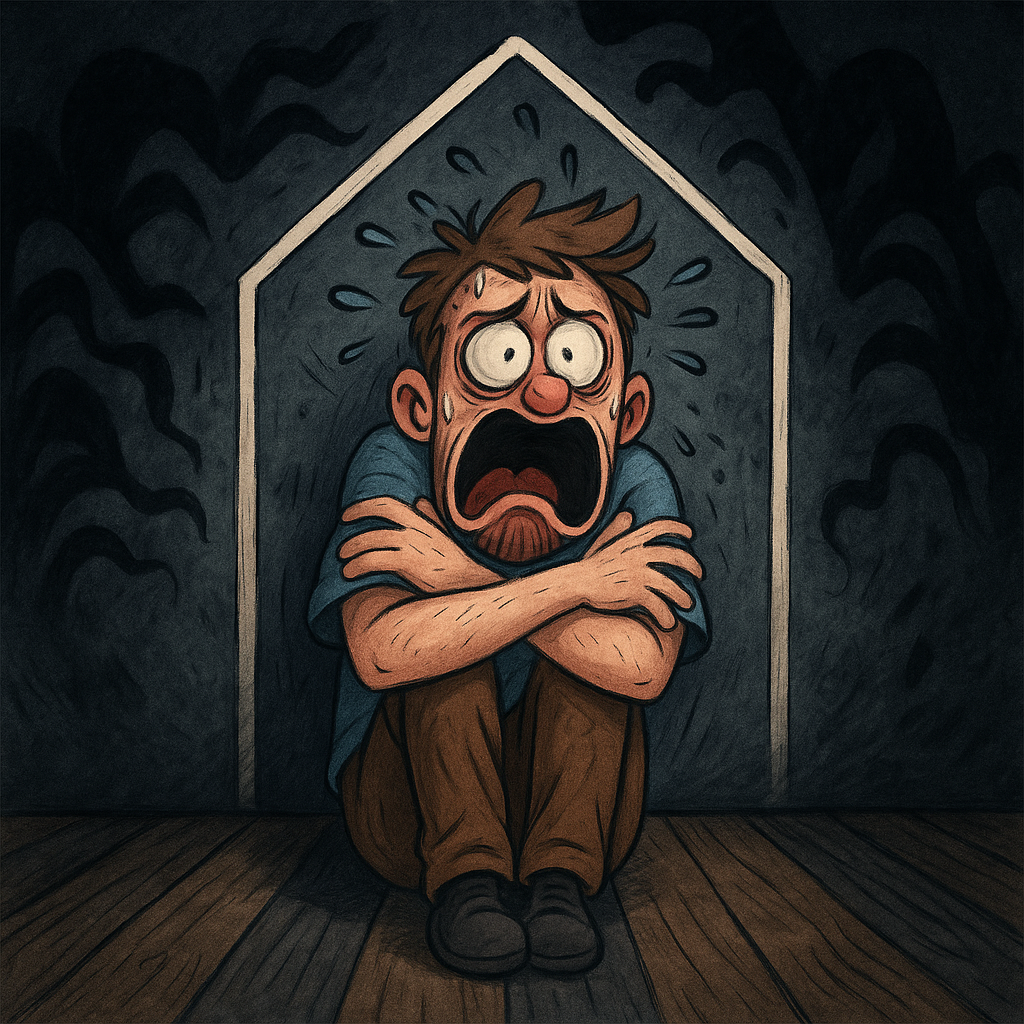Fear is an ancient survival response of the nervous system known as the “fight or flight” response. It is triggered by the brain, especially the amygdala, when it detects a threat.
🧠 1. Threat Detection
- The amygdala, the emotional center of the brain, plays a key role in fear.
- When danger is detected (like a snake, loud noise, or unexpected situation), it sends an alarm signal.
⚡ 2. Triggering the Response
- The amygdala signals the hypothalamus, which activates the survival response.
- The adrenal glands release adrenaline (epinephrine) and cortisol.
❤️ 3. What Happens in the Body
- Faster heartbeat → more blood to muscles, ready to run or fight.
- Faster breathing → more oxygen intake.
- Dilated pupils → better vision.
- Pale skin → blood drawn from skin.
- Sweating → cooling the body and maybe helping to escape (according to some theories).
🧬 4. Why Does This Exist?
- It’s an evolutionary advantage: early humans survived wild animals and threats thanks to quick fear responses.
- Those who didn’t feel fear may not have survived to pass on their genes.
🧘♀️ 5. Modern Context
- Today we rarely face wild animals, but the body still reacts the same way to:
- Job pressure
- Exams
- Interviews
- Public speaking


ARTICLES IN THE SAME CATEGORY
LET JOY BECOME A HABIT
WHERE DO HUMAN HAPPINESS AND LUCK ORIGINATE? – EIGHT WAYS TO CULTIVATE GOOD FORTUNE (PHÚC ĐỨC) FOR YOURSELF
Happiness Needs Reminding: The Art of Living Amidst Calamity A Culture of Vigilance Deeply Ingrained in the Subconscious
If the story of Boris Johnson’s “£1 Million Man” and Ukraine is true, to what extent has human morality degraded?
Living Naturally, Fearless of Age, Seeking the “Just Right”
Discovering the Wisdom of “Seeing Through Everything But Not Speaking Out”: The Path of Cultivation in Vietnamese Culture and a Great Life Wisdom
ARTICLES IN THE SAME GENRE